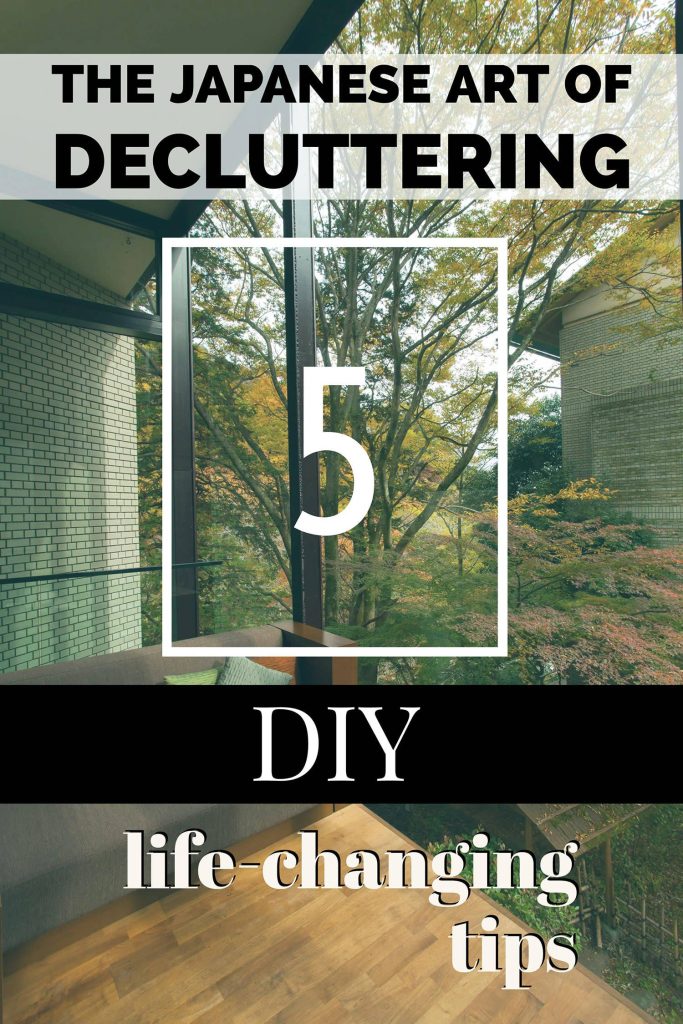Demystifying the Decluttering Process: Step by Step to a Lighter Life

Understanding the Essentials of Decluttering
Have you ever felt overwhelmed by the endless accumulation of belongings? Many individuals in the United States grapple with the challenges of a cluttered environment. As our lives get busier, the need for clarity and organization becomes more pressing. The average American household accumulates an array of items—from furniture to clothing, kitchen gadgets to nostalgic memorabilia. This avalanche of possessions can lead to chaos, affecting both mental and physical well-being.
Why Declutter?
Decluttering is not just about tidiness; it’s a transformative process that can lead to a lighter, more fulfilling life. Many experts recommend decluttering as a way to not only create a more inviting physical space but also enhance your mental state. Here are some captivating benefits of decluttering:
- Enhanced Focus: Studies have shown that a clean space promotes mental clarity. When your environment is clutter-free, it can greatly improve your ability to concentrate and retain information. In fast-paced workplaces, for example, employees report higher focus levels and less time lost searching for needed items.
- Reduced Stress: Less clutter means fewer distractions. A minimalist environment can be calming, reducing anxiety levels that often accompany visual overwhelm. In fact, research indicates that people living in organized spaces experience significantly lower stress, leading to better overall health.
- Improved Productivity: An organized area can boost efficiency. For instance, a study by Princeton University found that individuals working in cluttered environments struggled more with completing tasks than those in streamlined spaces. Thus, by decluttering, you can unlock your full potential.
Your Decluttering Journey
Embarking on your decluttering journey may seem daunting, but breaking it down into manageable steps makes it achievable. Consider these essential practices to guide your way:
- Start Small: Tackle one room or area at a time. Whether it’s cleaning out your closet or organizing your kitchen drawers, begin with small, defined tasks. This not only makes the process less intimidating but also provides a sense of accomplishment.
- Set Clear Goals: Define what you wish to achieve. Are you decluttering to create space for a home office, or simply to enjoy a more serene living environment? Knowing your end goal will help keep you motivated and focused.
- Establish a Timeline: Create a realistic schedule for your decluttering efforts. Commit to a specific timeframe—perhaps dedicating a weekend or a few evenings each week to sort through items. A well-structured plan prevents procrastination and ensures progress.
By following these strategies, you can demystify the decluttering process and embrace the benefits it brings. This journey is not merely about cleaning; it’s about reclaiming your space and, ultimately, finding a renewed sense of peace and control over your life. Get ready to discover a newfound sense of freedom—one that encourages mindful living and allows you to focus on what truly matters.
LEARN MORE: Click here to delve deeper

Creating a Plan for Effective Decluttering
Once you understand the essentials and benefits of decluttering, the next step is to create a structured plan. A well-laid plan not only provides direction but also serves as a motivational tool throughout your journey. The idea is to take the decluttering process systematically, ensuring that you can achieve your goals without feeling overwhelmed.
Identify Areas of Clutter
Start by identifying the areas in your home that need the most attention. It could be a room, a closet, or even an entire basement filled with forgotten boxes. By pinpointing specific locations, you can tailor your approach to meet the unique needs of each space. Consider these common clutter zones:
- Closets: Often become dumping grounds for clothes that no longer fit or pieces that are simply out of style.
- Living Rooms: Coffee tables and entertainment areas can easily accumulate magazines, remotes, and miscellaneous items, leading to a disorganized appearance.
- Kitchens: Utensils, gadgets, and pantry items often pile up, making it difficult to find what you need when you need it.
- Home Offices: Paperwork, electronic devices, and supplies can easily scatter, leaving you with a chaotic workspace.
By focusing on these areas, you can create a clearing strategy that dramatically improves your environment. Visualize the target space you want to achieve, and keep it in mind to maintain motivation.
Develop a Sorting System
Once you have determined which areas to tackle, it’s time to develop a sorting system. An effective sorting strategy keeps the process organized and ensures that guilty feelings over discarded items do not hinder your progress. Consider the following categories:
- Keep: Items you use regularly or have significant sentimental value.
- Donate: Gently used items that can still serve others—this not only helps others but is often a rewarding way to let go of belongings.
- Recycle: Materials or items that are damaged beyond use but can be repurposed in an environmentally friendly manner.
- Trash: Items that are broken or unusable, taking up unnecessary space.
This systematic approach ensures that you actively engage in the decision-making process, rather than passively discarding items without consideration.
Stay Accountable
Accountability is a vital component of the decluttering process. Enlist a friend or family member to support you in this journey. Sharing your goals and progress with someone else can provide encouragement, and they can help keep you on track. Alternatively, consider joining online decluttering groups or forums to connect with others pursuing similar goals. Sharing tips, successes, and challenges can foster a sense of community, making the decluttering process more enjoyable.
By implementing these strategies into your decluttering journey, you’ll not only create a lighter living space but also embrace the path toward a more mindful and organized lifestyle. Each step taken is an investment in your well-being, offering a glimpse into the liberating world of minimalism—where you can reclaim your space and find clarity amidst the chaos.
| Advantages | Details |
|---|---|
| Increased Focus | Decluttering reduces distractions, helping you to concentrate on tasks better. |
| Enhanced Mental Health | Less clutter contributes to lower stress levels and promotes a sense of calm. |
| Improved Productivity | A clean and organized space motivates you to tackle current tasks and projects effectively. |
| Space for Creativity | An uncluttered environment helps foster creativity, allowing new ideas to emerge. |
As individuals embark on the journey of decluttering their lives, they often discover that the benefits extend far beyond mere organization. One significant advantage is the increased focus that follows the removal of excess items. A clutter-free environment can lead to improved concentration, making it easier to complete tasks without the usual distractions. Beyond just focus, the mental health benefits of decluttering are profound. People who engage in this process frequently report feeling a greater sense of control and accomplishment, leading to lower stress and anxiety levels. By creating a space that promotes peace and tranquility, one can significantly enhance overall well-being.Moreover, productivity tends to soar in a well-organized setting. Without visual or physical clutter vying for attention, it becomes easier to manage responsibilities and initiate projects. This newfound clarity not only aids in task management but also sparks creativity, allowing individuals to think outside the box and generate fresh ideas that may have previously been obscured by chaos.
DIVE DEEPER: Click here to discover how minimalism can enhance your productivity
Implementing Your Decluttering Strategy
With a solid plan and a sorting system in place, the next phase in the decluttering journey involves the actual implementation of your strategy. This step can be both liberating and challenging, as it requires commitment and emotional resilience. Here are some essential strategies to keep your decluttering efforts focused and effective.
Set Realistic Goals
Before diving into the decluttering process, it’s crucial to establish realistic goals. Aim for small, achievable milestones rather than attempting to tackle an entire room or area in one go. For example, you might set a goal to declutter your kitchen pantry within a week or to sort through one closet per day. By breaking the task down into manageable segments, you mitigate feelings of overwhelm and create a sense of accomplishment with each completed segment.
Designate Time Slots
In addition to setting realistic goals, allocate specific time slots dedicated to decluttering. By scheduling these sessions, you create a structured framework that makes it less likely for other obligations to interfere. Even a mere 15 to 30-minute session can yield significant progress. You may consider setting a timer and racing against it; this lends an element of fun and urgency to the process.
Choose Your Ideal Environment
The environment in which you declutter can greatly affect your motivation and mindset. Select a space that feels comfortable and inspiring, with good lighting and minimal distractions. Some individuals prefer to play energizing music or listen to podcasts while decluttering, which can turn the task into a more enjoyable experience. Others may find solace in silence, allowing them to reflect and make decisions more clearly.
Avoid Sentimentality Traps
As you sift through items, you may encounter objects that evoke strong emotional responses or memories, leading to potential sentimentality traps. It’s essential to remind yourself of your goals and how maintaining clutter can hinder your mental and physical space. When deciding whether to keep or part with these items, consider the following questions:
- Do I use this item regularly, or has it been collecting dust?
- Would I purchase this again if I were shopping right now?
- Does this item contribute positively to my life, or does it hold me back?
These inquiries can provide clarity, enabling you to make more objective decisions about your belongings.
Celebrate Small Wins
Throughout your decluttering journey, take the time to celebrate small wins. For instance, once you finish sorting through a closet, reward yourself with something enjoyable, whether it’s a small treat, an episode of your favorite show, or a relaxing coffee break. Acknowledging the effort you’ve put into decluttering reinforces the positive behaviors that lead to a lighter life.
Moreover, keeping a visual record of your progress, such as before-and-after photos, can elevate your motivation and serve as a motivational reminder of how far you’ve come. Each completed decluttering session propels you forward, creating momentum that can transform even the most chaotic spaces into organized sanctuaries.
Implementing these strategies with intentionality will not only clear your physical space but also empower your emotional well-being. As you continue with your decluttering process, you’ll find yourself moving closer to achieving that desired sense of peace and clarity in your surroundings, making way for a rejuvenated, focused, and lighter way of living.
DISCOVER MORE: Click here to learn how your workspace affects productivity
Conclusion: Embarking on Your Lighter Life Journey
As we wrap up this exploration of demystifying the decluttering process, it is evident that the journey to a lighter life is not merely about the physical act of clearing out your belongings. It is an emotional and psychological voyage toward rejuvenation, clarity, and greater well-being. By implementing the strategies discussed—such as setting realistic goals, designating specific time slots, and creating a conducive environment—you equip yourself with the tools necessary to tackle clutter effectively.
Moreover, learning to navigate sentimentality traps is crucial; understanding the emotional weight of your possessions can clear not only your space but also your mind. Remember, this process is not a race but a step-by-step method that allows you to appreciate each milestone along the way. Celebrate these small wins, whether it’s a newly organized closet or simply the relief of letting go of unnecessary items. These moments of recognition empower you to continue on your journey.
Ultimately, decluttering is about creating a space that reflects who you are today, free from the burden of yesterday’s decisions. As you embrace this step-by-step process, you will find that your surroundings begin to mirror a clearer, more intentional life. So take that first step towards decluttering, and enjoy the transformation that leads you to a lighter, more fulfilling existence.


